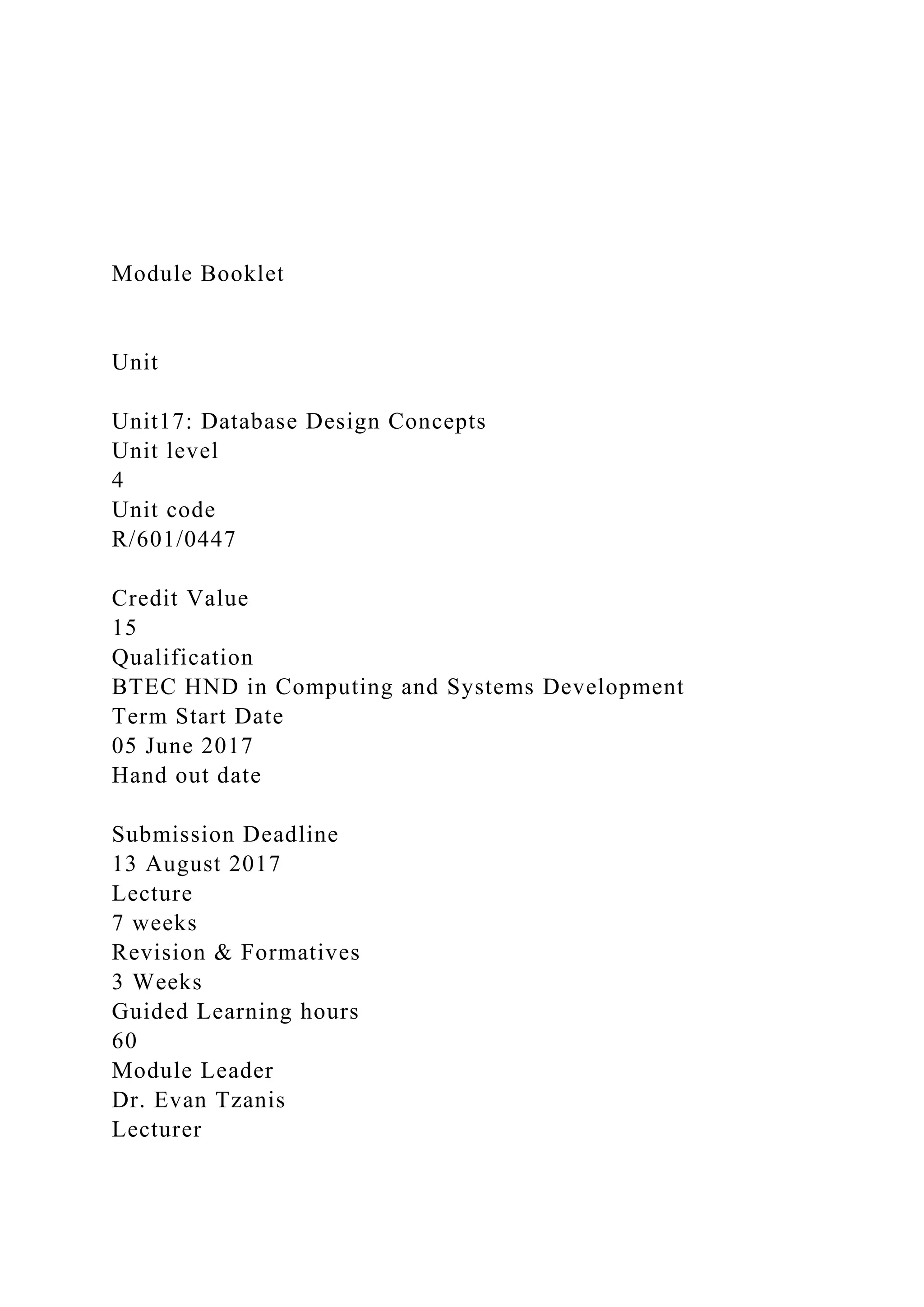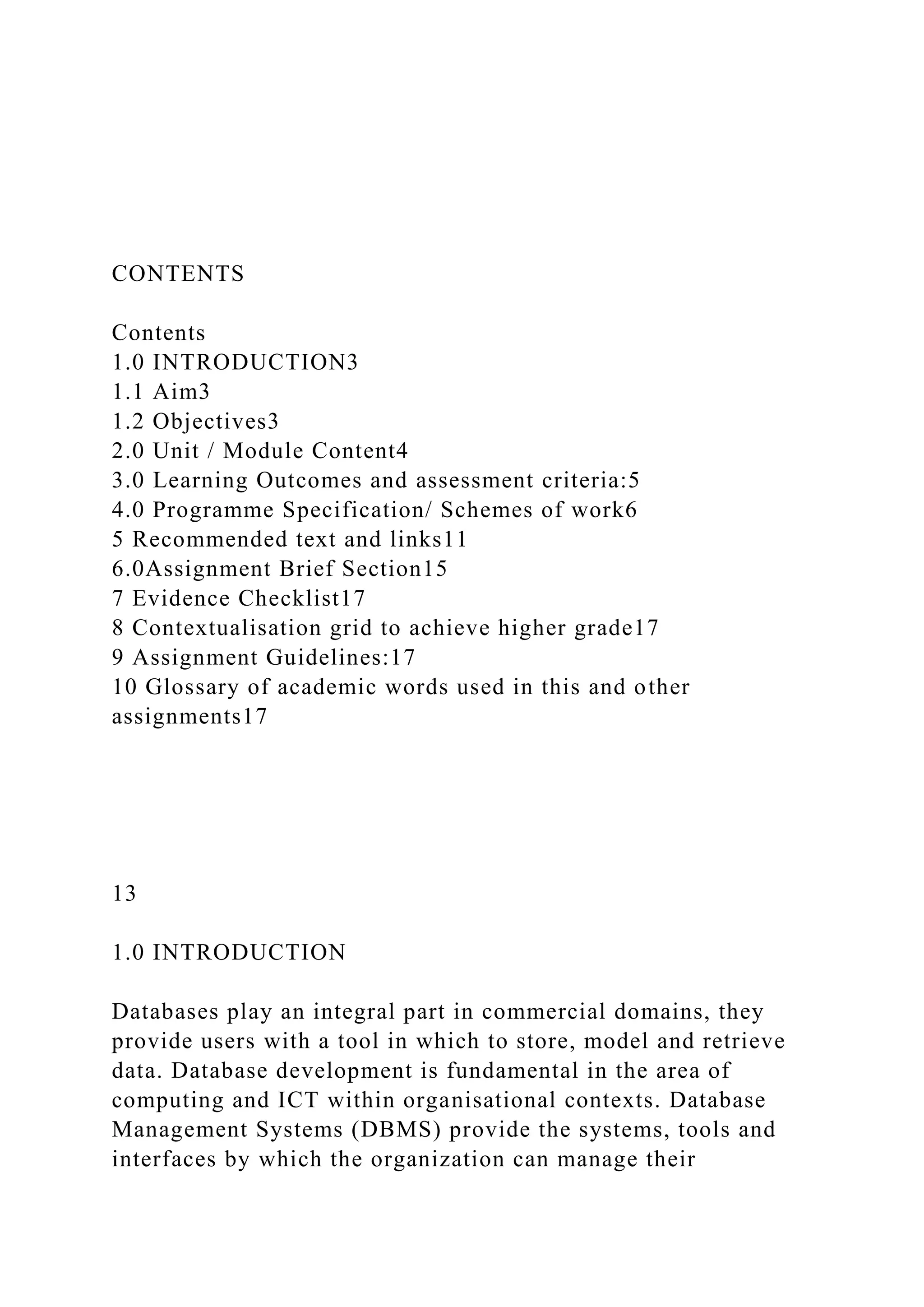This document provides information for a database design concepts module, including the aims, objectives, content, learning outcomes and assessment criteria. The module will explore database architecture, design techniques, and applying design skills to create complex databases. Students will understand databases, data management systems, and design approaches. They will learn to design, create, document and evaluate a database containing multiple interrelated tables to address a case study on an art gallery. The module will be assessed through an individual report of approximately 4,500 words applying the concepts to design a database solution for the case study.




























![Booking Assistant
24
Module Booklet
Qualification
BTEC HND in Computing and Systems Development
Unit
Unit 24:Networking Technologies
Unit level
4
Unit code
M/601/0472
Credit Value
15
Teaching Period
10 Weeks [Contact Hours: 60]
Term Start Date
05 June 2017
Hand out date
Submission Deadline
13 August 2017
Lecture](https://image.slidesharecdn.com/modulebookletunitunit17databasedesignconcepts-221101050027-b1befd7a/75/Module-BookletUnitUnit17-Database-Design-Concepts-docx-29-2048.jpg)

















![6
7
8
9
Assessment support
10
Assessment support & upload
Lecturer: Mr Rafiqul Islam
Campus: WH/PR
Contact details: [email protected]
Assessment:
The module will be assessed meeting all the LO as specified by
the awarding body, EdExcel.
Please read the instructions carefully while addressing the tasks
specified.](https://image.slidesharecdn.com/modulebookletunitunit17databasedesignconcepts-221101050027-b1befd7a/75/Module-BookletUnitUnit17-Database-Design-Concepts-docx-47-2048.jpg)





















